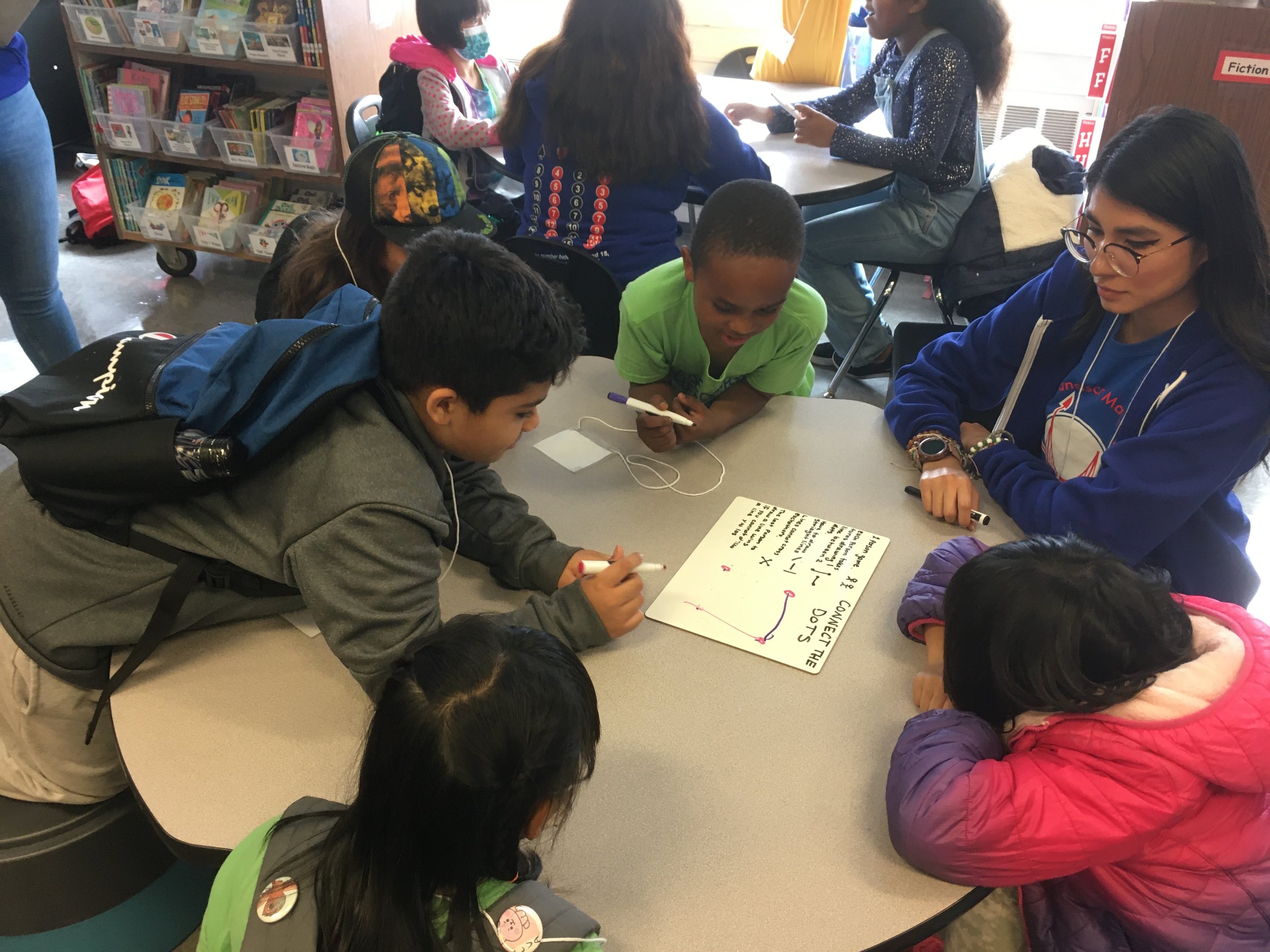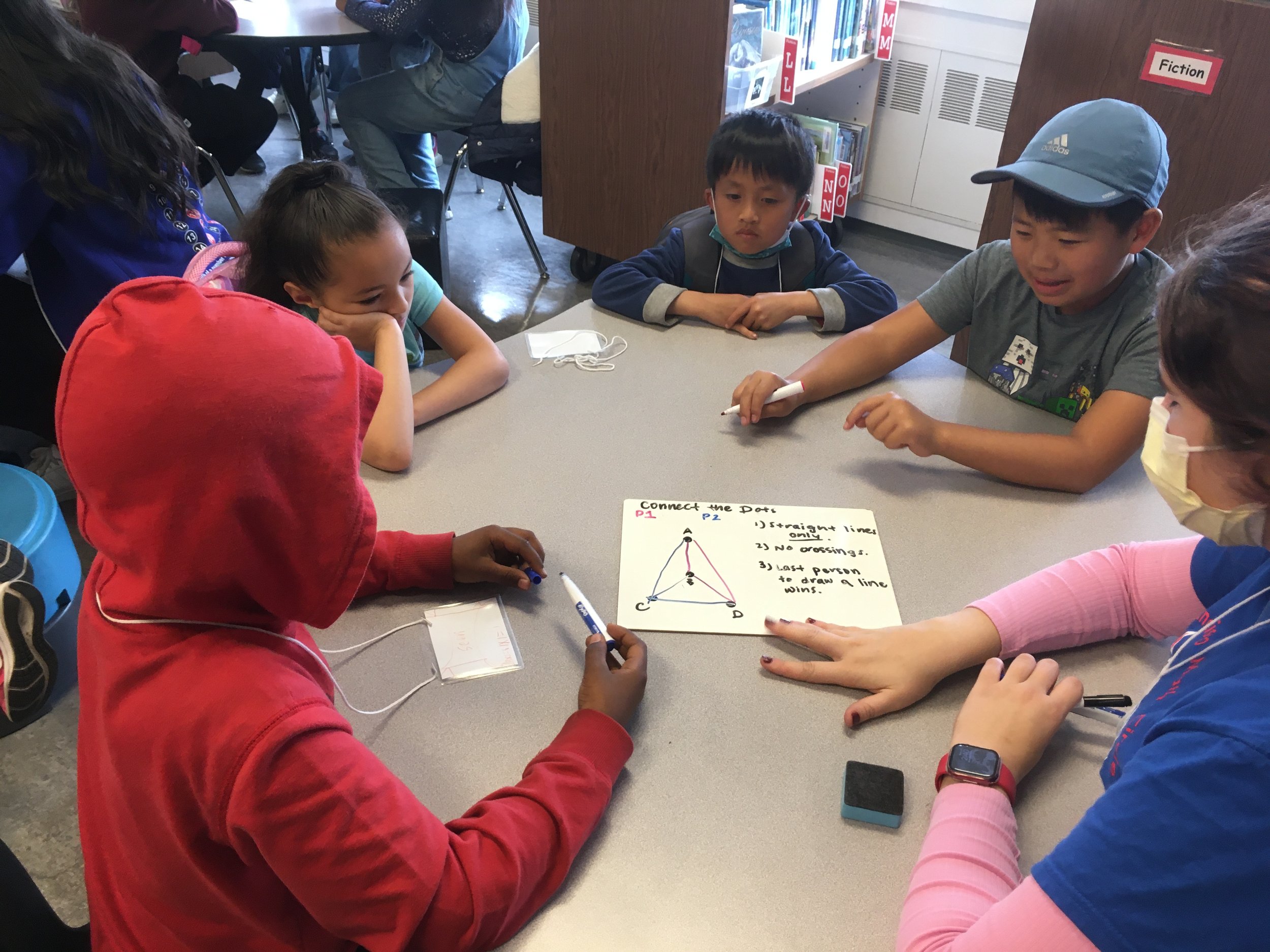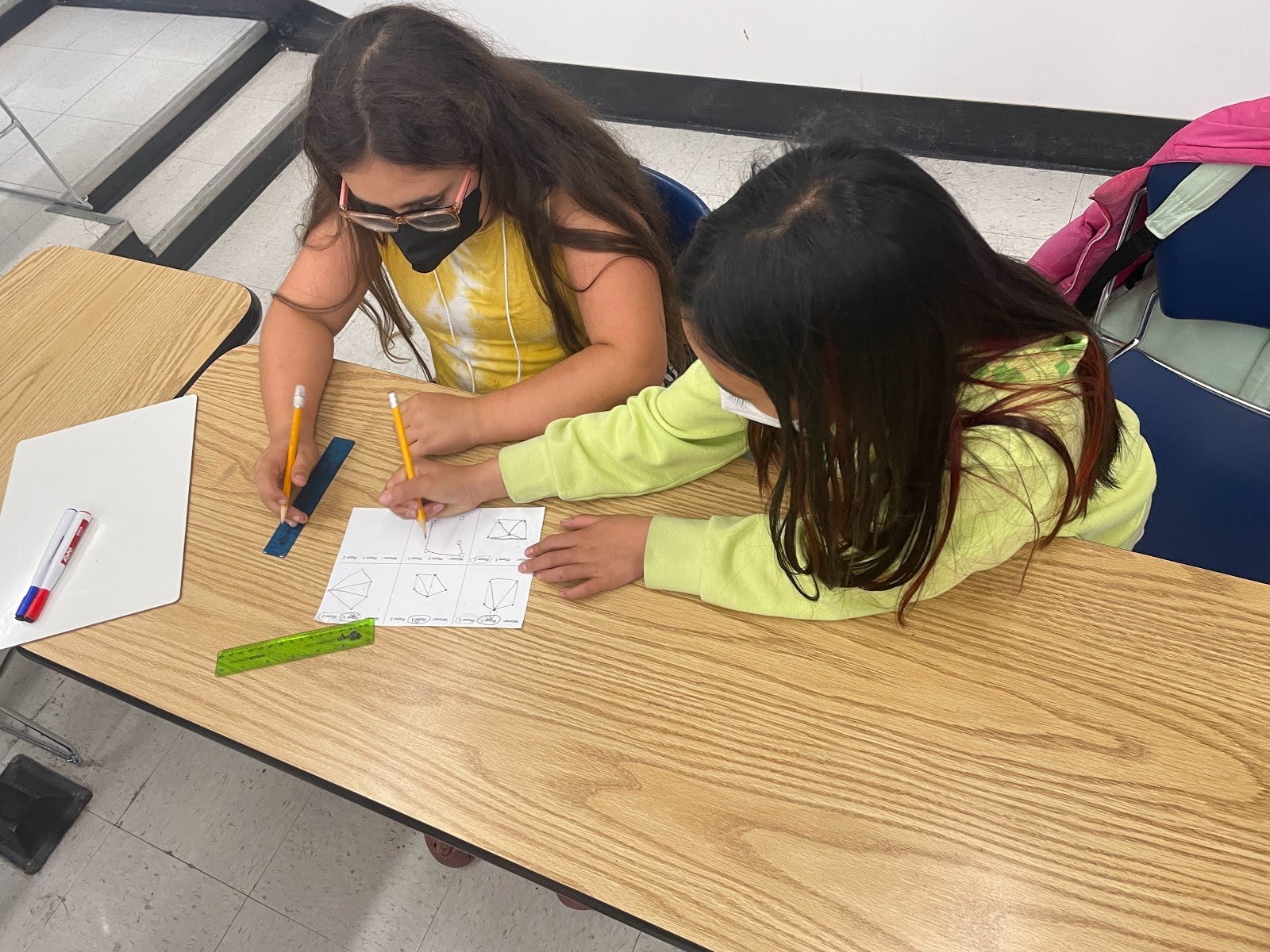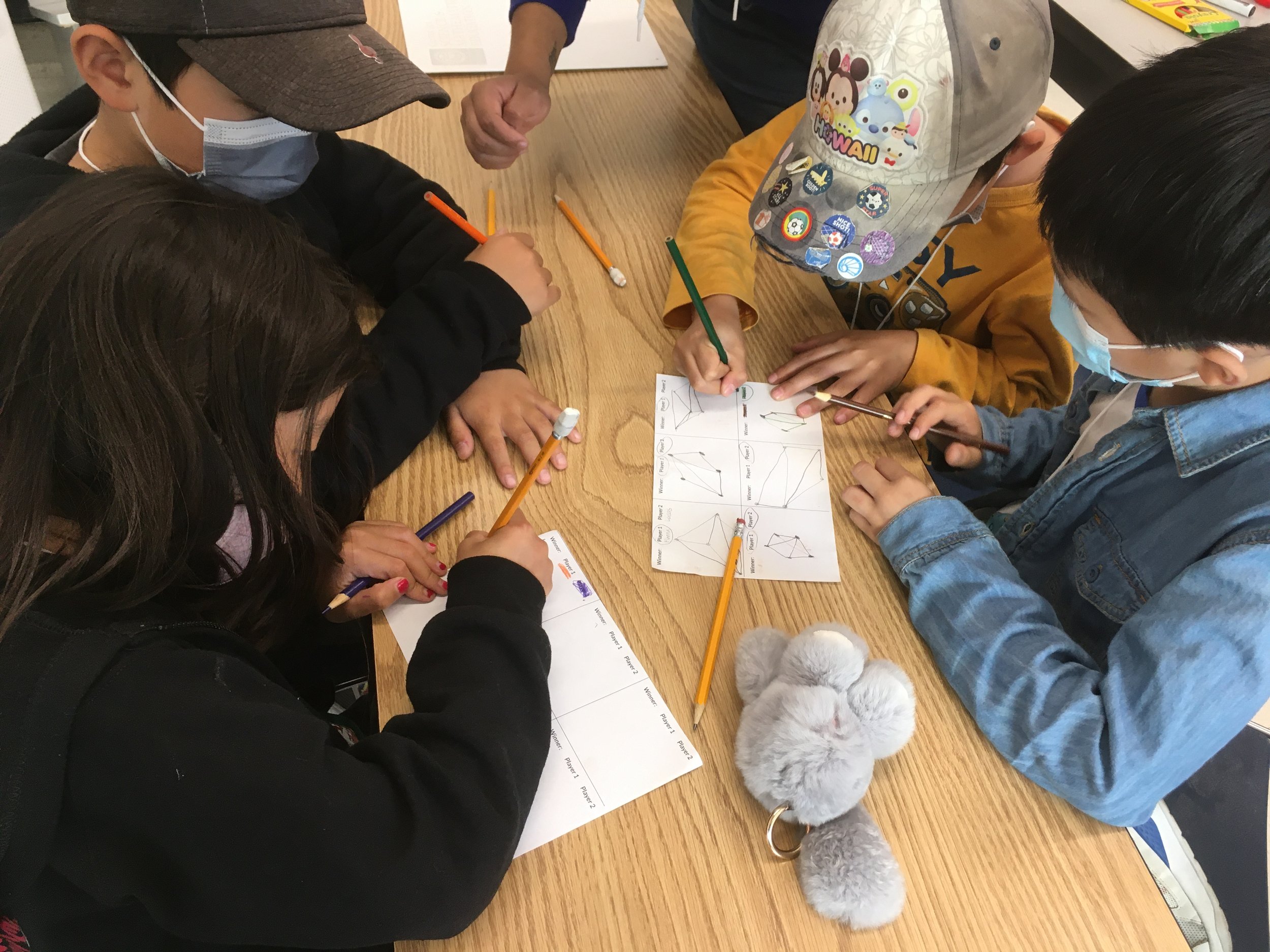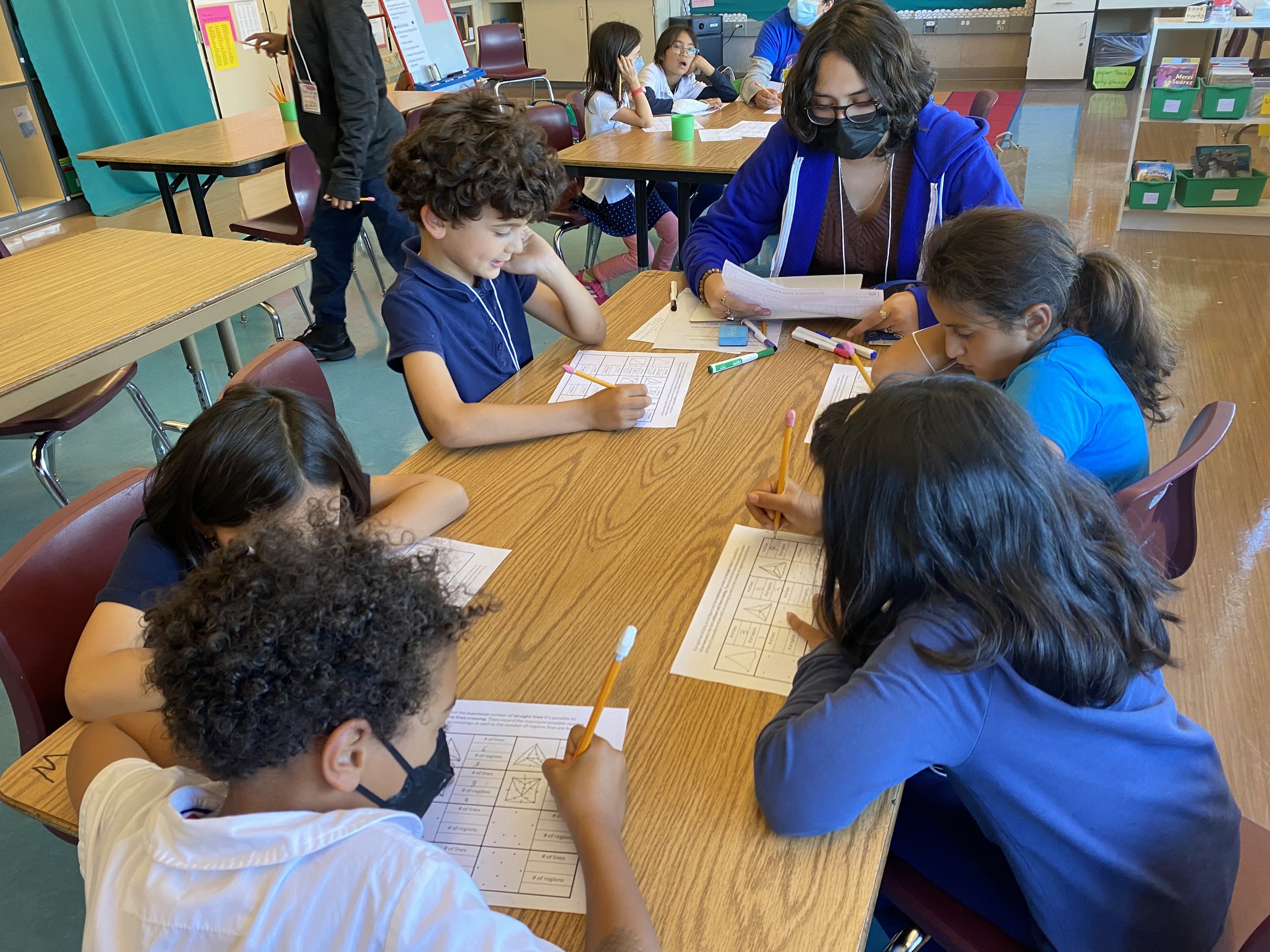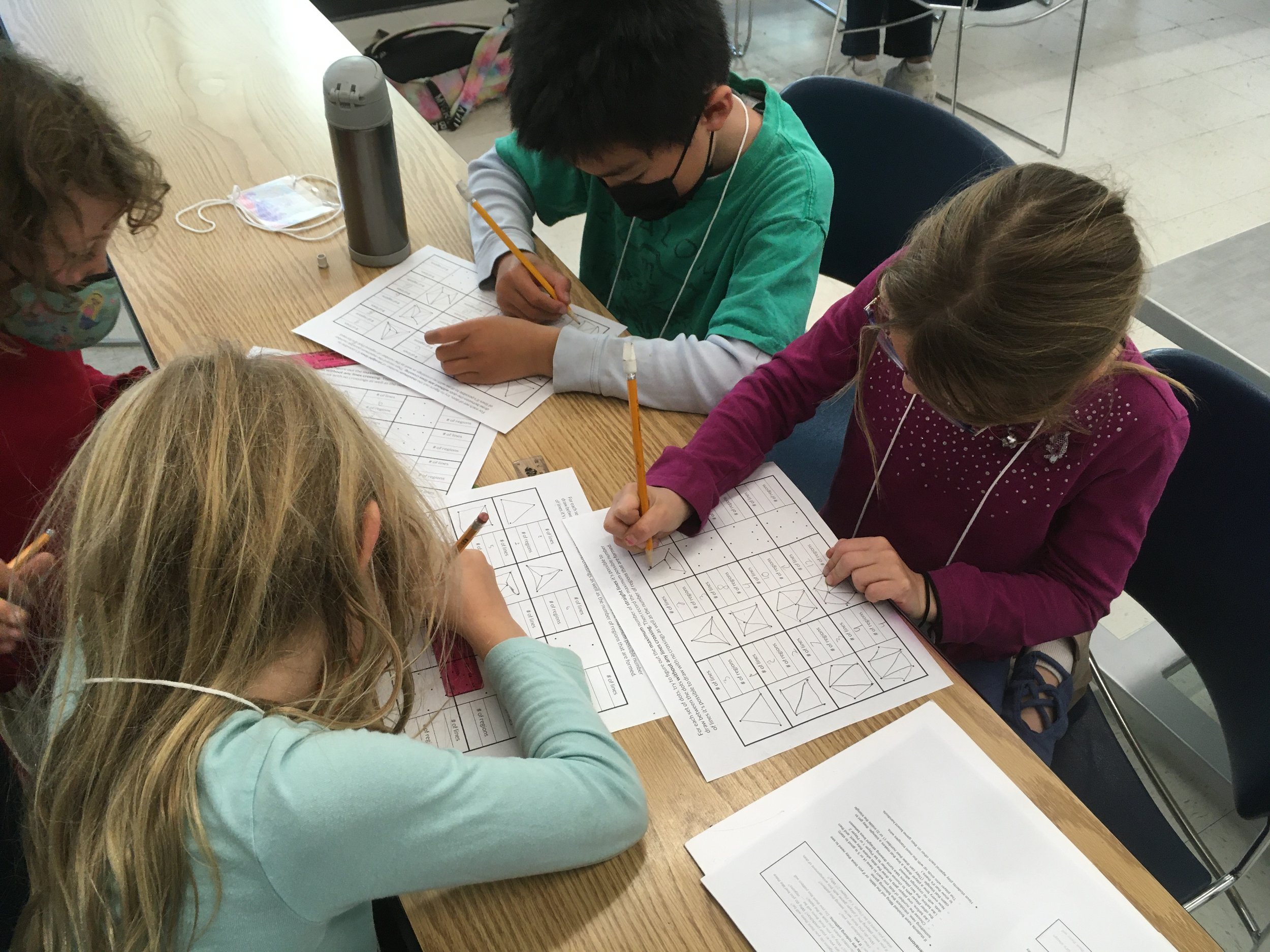Connect the Dots
How it works
Connect the Dots is a 2-player game. Here's how to play:
You start with a set of dots
The 2 players take turns drawing lines between dots
You can only draw straight lines
Lines can't cross
You can only draw 1 line between a pair of dots
The last person who is able to draw a line wins
If you play with 4 dots, can you draw the dots so you can guarantee you win if you go 1st? What if you go 2nd? What if there are 5 dots instead of 4? What if your opponent gets to draw the dots, but you get to decide whether to go 1st or 2nd?
In this activity, students first try to find a way to draw 4 dots so that they can beat a facilitator at this game if they go 1st. Next, they try to find a way to draw 4 dots so that they can beat a facilitator if they go 2nd. Then they explore these challenges with 5 dots. For 6 dots, the facilitator gets to draw the dots and the students decide whether to go 1st or 2nd. Students also explore a solitaire version of the game where the goal is to draw as many lines as possible for a given arrangement of dots, and they connect this exploration back to the original 2-player game.
Why we like this activity
It’s fun! Students enjoy playing the game and figuring out how to draw the maximum number of lines.
It helps students develop numerical reasoning.
It helps students develop spatial reasoning.
It requires students to engage in mathematical habits of mind:
Using logic, finding and using strategies, and looking for patterns when trying to beat the facilitator
Looking for patterns and making and testing predictions when exploring the maximum possible number of lines for different arrangements of dots
It has a low floor and a high ceiling: Students can start playing the game by trial and error, but figuring out how to beat the facilitator is more challenging, especially as the number of dots increases. And there are many interesting patterns to find (and to try to understand) when exploring the maximum possible number of lines for different arrangements of dots.


